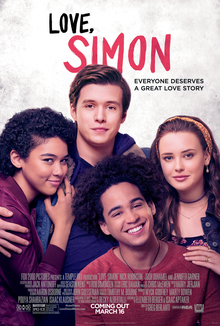Realistic Queer Representation in Literature
Alli Armijo // Blog Writer
What defines something as realistic? And who has the authority to decide what is realistic? Especially in the realm of literature, realism can often be subverted for drama or fantasy, which is beneficial in the sense that it allows people to imagine themselves in the stories in a way that nonfiction has a limited potential for. Specifically, queer representation in literature offers a unique position, as the majority of queer narratives focus on the same event (coming out) to catalyze the story of their characters. While a coming out story can undoubtedly be a momentous occasion in the life of a queer person, it is definitely not the only, or in some cases most, important moment. And circulating dramatized stories about how coming out can be the pivotal moment in a queer person’s life is dangerous, as that understanding perpetuates the idea that after a queer person comes out, their problems disappear, or rather, they are immediately thrown into the queer binary of acceptance and rejection.

The first story that comes to mind when I think of this nonsensical tradition is Love, Simon which has also been adapted into a movie. The story centers around Simon, who struggles to come out to his parents and friends in the midst of searching for the romantic partner he talks to online. Ultimately, his family and friends are accepting, allowing him to pursue his romantic partner with ease. In my opinion, this is an example of a queer story written for a straight audience. By this, I mean that Love, Simon is a picturesque queer love story; it does not interrogate queerness anymore than it interrogates love, portraying a queer identity that is catalyzed by the inevitable coming out, and the illusion that everything becomes easier after a queer person comes out. This not only inaccurately imports coming out, but it does not reveal the tribulations of a queer existence. With this being said, I argue that Love, Simon makes queerness palatable for an audience that is more intrigued by the aesthetic of a queer story rather than the raw, lived experience. This is not to criticize anyone who enjoys the story of Love, Simon, as it is romantic in itself; rather, it is to extend the narrative’s conversation and show how far queer literature has come, but more importantly, how far it has to go to realistically portray queer characters.
Moreover, centering stories about queerness around the concept of coming out neglects other equally important facets of queer identity that are less talked about in literature and the media as a whole. For instance, the constant negotiation, or fight, to fit queer identity into an increasingly heteronormative culture is a struggle that is never triumphed for queer individuals. Specifically, not just fending off homophobia, but being able to exist—and thrive—in a space that celebrates heteronormative relationships and standards not only takes its toll on queer individuals, but also queer relationships, as the struggle to feel validated by the surrounding culture becomes increasingly difficult. In other words, I would argue that some queer literature portrays queerness as a personality trait rather than a facet of identity, which neglects both how and to what extent queerness impacts other areas of identity, such as behavior, communication, and thought processes. In this way, by providing more literature that interrogates heteronormative culture as it imposes on queer spaces, readers are made more aware of how queerness affects every aspect of an individual’s identity, and how a queer story does not end with coming out.
That being said, another way to provide more realistic queer representation in literature is by focusing on the before of coming out, or rather, everything that occurs before an individual realizes, or is able to articulate (either to themselves or to others) that they are queer. The common way novels like to show a character “realizing” they are queer is when they develop a crush on the person of the same sex. However, I would argue that this is just another example of the heteronormative approach to queer identity, rather than a realistic depiction of how queer identity comes to fruition. This is not to say that crushes are an invalid, or unrealistic, way to recognize one’s queerness, but rather, argue that it is not the only way, and can actually set a harmful precedent for a queer audience. For instance, identity negotiation, or rather, trying to fit into a binary system that does not seem to validate most aspects of a queer person’s identity, is an extremely isolating, frustrating, and awkward experience that paints queerness as an “other” or something that should be suppressed rather than embraced. It also centralizes on gay and lesbian identity development, often neglecting, for instance, asexual or transgender identity, to name a few.
In this way, while it is a victory in itself that queer representation in literature continues to grow and persist, it is important to stop and interrogate such representation and evaluate how it contributes to an accurate or inaccurate portrayal of queer identity. Realistic queer representation is important not only for young queer audiences, but also for the greater public, as it is vital that people understand that queerness does not end or begin with coming out. It is vital that readers recognize how heavily heteronormativity influences social structures and ways of thought. Recognizing this provides the opportunity for people to better understand how queer existence is more than what is written in books or shown in TV and movies. It also goes to show that realistic stories might not always be pretty, but sometimes that is the point, and it is in that raw portrayal where audiences are able to grow and sympathize with queerness, undoctored and unapologetic.
